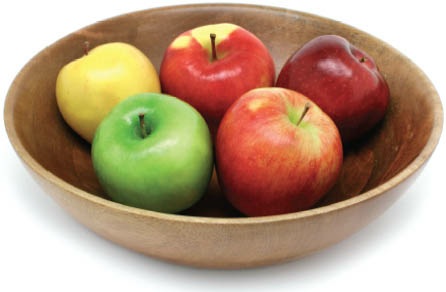The Healthy Green Drink Diet (11 page)
Read The Healthy Green Drink Diet Online
Authors: Jason Manheim

pungent and also greens that are dry and yellowing. And always buy organic when possible.
Some studies have shown organic produce to contain higher amounts of nutrition while other studies have
seen no significant increase. Either way, organic fruits and veggies contain, at most, pesticides derived
from natural sources rather than the carcinogenic pesticides that are synthetically manufactured, and that’s
reason enough to make the switch. Granted, organic is often more expensive, but if you stick to locally
grown produce from farmer’s markets and small local stores, there are generally deals to be had.
Saving
Start buying your most used greens in bulk. I like to stock up on spinach by buying huge prewashed bags at
places like Costco or Trader Joe’s. Also, consider purchasing your berries in large frozen bags and
buying bananas in bulk (freezing them before they get too ripe). These are all much less expensive than
purchasing in smaller quantities.
You can even freeze your spinach if the giant bag proves to be difficult to consume before going bad. All
of this is going to add some weight to your freezer, so I recommend a second deep freezer in the garage,
storage shed, or patio.






And then, of course, you can grow your own greens…
Growing
This is easier than you think, even for those of you living in apartments with no backyard access. At the
very least, all you need is a windowsill that gets a good amount of sunlight. Not only is it easy, but it’s the
cheapest way to get your green drink fix.
Here are three important steps to get you started:
Seeds—talk to the suppliers at your local farmer’s market or search online for open-pollinated,
nonhybrid, natural, non-GMO seeds. I like to use www.rareseeds.com (they have a very wide variety)
or www.sproutpeople.org (they specialize in sprouts).
Equipment—check your local home improvement store for planters in a variety of sizes, pick up some
wood if you want to build your own grow box (I recommend reading
All New Square Foot Gardening
by Mel Bartholomew if your space is limited), purchase a sprouting kit (I recommend
www.sproutpeople.org), and don’t forget the fertilizer and manure.
Space—grow in windowsills, patios, yards, porches, hanging baskets, the walkway on the side of your
house or apartment, homemade grow boxes, the list is endless. You can even rent a space from your
city’s community gardening location.
I suggest starting with a few herbs like basil and mint and a few easy leafy greens like spinach and lettuce
of any variety. Kale, strawberries, tomatoes, beets, chard, and carrots are also easy to grow if you have
the space.
Try adding some onions, marigolds, garlic, and hot peppers to keep the pests away. You can also
purchase ladybugs from your local nursery to rid yourself of aphids, or do what my grandmother used to
do and mix a bit of natural dish soap with water in a spray bottle and douse your plants to keep the critters
away.
There’s nothing like keeping your own fresh edible garden, so give it a try and reap the benefits.
Storing
Fresh fruits and greens last on average about one week. here are some tips to extend that time for as long
as possible:
Don’t prewash your fruits greens. If you do, you’ll find then molding, getting soggy, and wilting much
faster.
Store your greens, unwashed, in sealed plastic bags to keep out air and water.
Keep most fruits (except citrus) on the countertop and out of the refrigerator; otherwise, you’ll end up
with mealy fruit. Avocados can be ripened on the counter and stored in the refrigerator to slow the
process.




Store cut fruit in a sealed plastic bag to prevent it from absorbing weird refrigerator smells.
If something can’t be eaten before going bad, chop it up, put it in a sealable bag, and toss it into the
freezer.
Fresh basil and other herbs can be stored in the refrigerator wrapped in a slightly damp paper towel, or
you can freeze them in ice cube trays covered with water—a great way to chill your smoothies and get